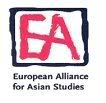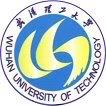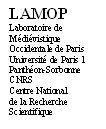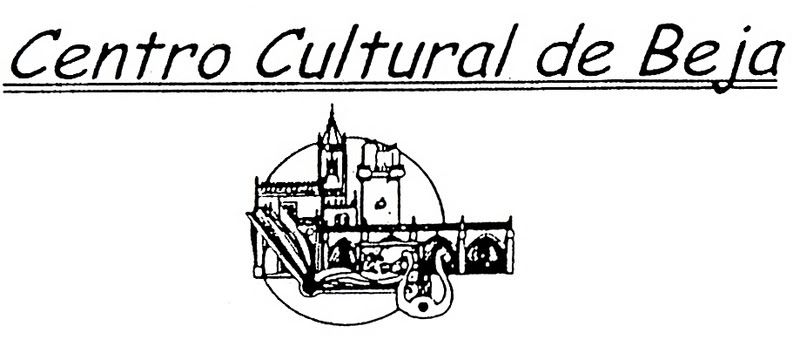February 16, 2008
Terça-feira, 8 de Abril, Beja. Sessão de abertura
Sessão de abertura com o patrocínio do Município de Beja, e a participação de representantes do IGESPAR (Ministério da Cultura).
Discursos de abertura pelo Professor Carlos Guedes Soares, Director do Departamento de Engenharia Naval do Instituto Superior Técnico (IST) e pelo Professor Wu Weiguo, Deão da Wuhan University School of Transportation (República Popular da China).
Manhã:
- Francisco Alves (Portugal)[1] e Eric Rieth (France)[2]: Keel assembling and hull caulking system-patterns of Portuguese ancient wooden shipbuilding based on archaeological evidence.
- Ana Vongkh (Macao Autonomous Province, RP China)[3]: The way Chinese shipbuilders used to build their boats and how they made them strong.
Tarde:
- Hang Choi (S. Korea)[4]: The hull form, construction method and structural strength of ancient Korean Ships.
- Eric Rieth (France): Geometry of hull shapes and architectural structure: a different approach to the study of the origins of the «frame-first» shipbuilding in the Mediterranean (Géométrie des formes de carène et structure architecturale: une autre approche de l'étude des origines de la construction "sur membrure première" en Méditerranée).
-Vasco Mantas (Portugal)[5]: Roman Shipbuilding. Models and Influences (Construção naval Romana. Modelos e Influências).
_________________________________________
Quarta-Feira, 9 de Abril, Beja
Manhã:
- Randy Sasaki (Japan)[6]: Considering the Philosophy of shipbuilding in Medieval East Asia : Case Study from the lost Fleet of the Kublai Khan.
-Lotika Varadarajan (India): Sewn Boats of Lakshwadeep/Laccadives Islands (title to be confirmed)
- Bart Boon (Netherlands)[7]: What limits the size of wooden ships?
_________________________________________
Quinta-feira, 10 de Abril, Convento da Arrábida
Manhã:
-Xi Long Fei (R.P. China)[8]: Archaeology of Chinese Ancient Ship and Structure Mechanics Analysis (I).
- Cai Wei (R.P. China)[9]: Archaeology of Ancient Chinese Ship and Structure Mechanics Analysis (II).
-Rex Warner (United Kingdom): 15th-Century Chinese shipbuilding and navigation to the Indian Ocean : A Sailor’s Perspective.
Tarde:
- Sally Church (United Kingdom)[10]: Two 16th-century Shipbuilding Manuals and the Light they Shed on the Structure and Materials of Ming Dynasty Chinese Ships.
- Kioko Koiso (Japan)[11]: Ships under pain: the structural behaviour of ships from the Portuguese Carreira da India as testified in shipwreck narratives.
- Catarina Garcia (Portugal)[12]: To build and «unbuild» Angra C and Angra D.
_________________________________________
Sexta-feira, 11 de Abril, Convento da Arrábida.
Manhã: Visita ao estaleiro tradicional de Sarilhos Pequenos (Moita), organizada pelo Eng.º Celso Santos (Rotas do Sal) promotor da defesa do património cultural maritímo da região do Vale do Sado[13].
Almoço e tarde em Peniche. Recepção pelo Município de Peniche.
Visitas (organização: Câmara Municipal de Peniche):
Visita a Peniche e ao Porto de Pesca local, onde se conserva um grande fragmento da sobrequilha de uma embarcação espanhola de três mastros do início do séc. XX .
-Museu Municipal de Peniche
-Entrevista com um antigo carpinteiro naval sobre a construção tradicional de embarcações em madeira.
_________________________________________
Sábado, 12 de Abril, Peniche (Auditório Municipal)
Manhã:
- Alessia Amato (Italia)[14]: Shipbuilding in wood in ancient Mediterranean. Archaeological analisis of the evolution of the main structural elements, comparative analysis of assemblage typologies from the Archaic to late-classical period (Construção naval lignea no Mediterraneo. Análise arqueológica dos principais elementos estruturais, confronto das tipologias de assemblagem, entre a época arcaica e a tardo-antiga).
- Eusebio Dizon (Philippines)[15]: A Presentation of Ancient Shipwrecks observed by underwater Archaeological works in the Philippines.
- Tiago Fraga (Portugal)[16]: Cargo and Warriors: Late Seventeenth Century Iberian Construction: Santo António de Tanna.
Tarde:
- Fang Lan (R.P. China)[17] and Li Bang Yan (R.P. China): The last wooden sailing fishing boats of lake Tai, China (2d half of XXth century).
- Vanessa Loureiro (Portugal)[18]: Structural elements from Arade 1 (second half XVth century / 1rst half XVIth century ship remains).
-Yong-han Kim (Korea)[19]: Medieval ship remains investigated in Korea (provisional title)
- Jean-Yves Blot (France)[20]: Two case studies of structural analysis applied to 18th and 20th century Spanish shipwreck remains found in Peniche waters.
Sessão de encerramento promovida pelo Município de Peniche.
For lecturers:
Sunday April 13th, Peniche: transport from Peniche to Lisbon, including Lisbon International Airport.
Participants who are not able to attend the full five-day Workshop programme must inform the Coordinator as soon as possible in order that the necessary adjustments may be made and their special needs catered for.
Participants are reminded that a 1-3 page abstract (no restriction on the maximum length) must be sent to the Coordinator by 15th February 2008. This will be included in the Pre-proceedings to be distributed during the Workshop itself.
Workshop participants are invited to indicate in advance the required hardware support for their presentation (video- PowerPoint- projector / transparencies projector / 35 mm slides projector).
All documents (text and image files) by Workshop participants for the Pre-Proceedings are to be addressed in doc (text) and jgp (images) formats to:
Jean-Yves Blot, Workshop Coordinator
c/o DANS/IGESPAR - Avenida da Índia, 136 - 1300-300 LISBON, PORTUGAL.
E-mail adress: jyb.cnans@ipa.min-cultura.pt
______________________
[1] DANS/IGESPAR director, professor at Universidade Nova, Lisbon.
[2] CNRS, professor at Paris I University.
[3] Maritime Museum, Macau.
[4] Professor, Seoul National University.
[5] Professor, Coimbra University.
[6] Post graduate, Texas A&M University.
[7] Naval Architect, Research and Consultancy. Teaches ship structure at the University of Duisburg/Essen, Germany
[8] Wuhan University, retired.
[9] Wuhan University.
[10] Cambridge University.
[11] Post graduate. Lisbon University (Faculdade de Letras ).
[12] Archaeological department, Azores islands provincial government.
[13] LAITAU (Associação para a Preservação e Dinamização do Património Naval do Rio Sado), a non-profit association. Its founder and president, Celso Santos, a forest engineer, has been the promoter of many projects including the reconstruction of traditional boats (galeão do sal Zé Mario), the building of full-size replicas (Hiate de Setubal), salvaging traditional boats sunk in the Sado River (galeão do sal Amendoeira) or promoting studies aiming at the restoration or building of other historical boats replicas.
[14] Postgraduate, Coimbra University
[15] National Museum of the Philippines, Manila
[16] Postgraduate, Universidade Autónoma de Lisboa.
[17] Post graduate, Suzhou University
[18] Post graduate, Paris I University, France.
[19] Director, National Maritime Museum, Mokpo, Korea
[20] Post graduate, Paris I University, France.
 Asia-Europe Workshop / Portugal 2008
Asia-Europe Workshop / Portugal 2008















